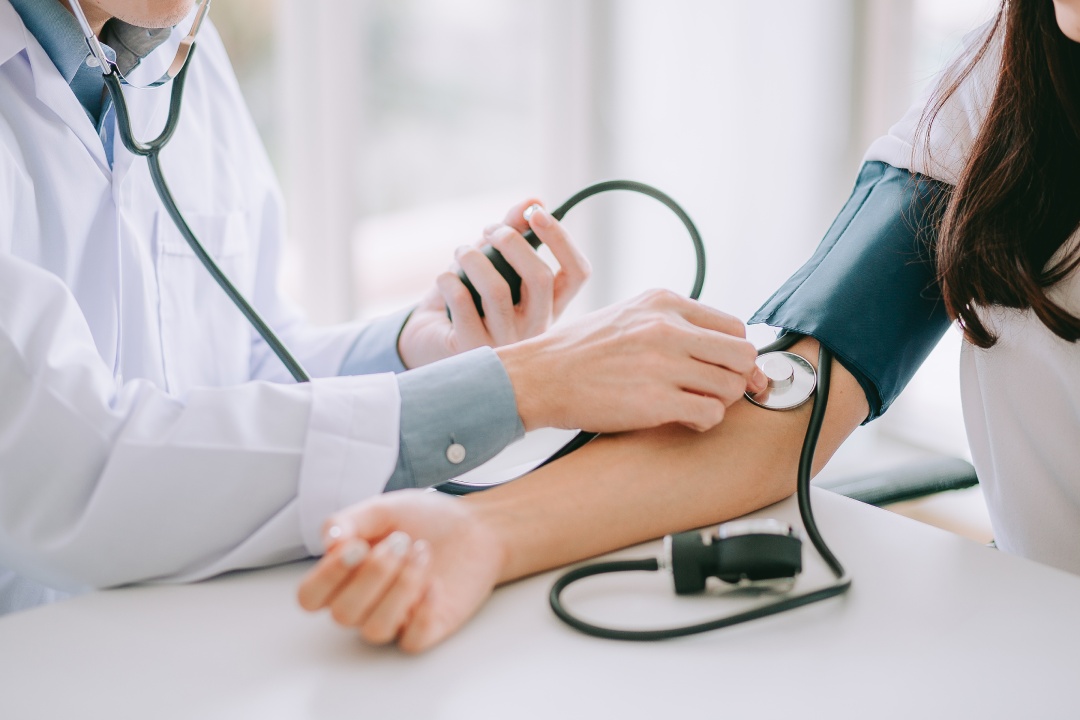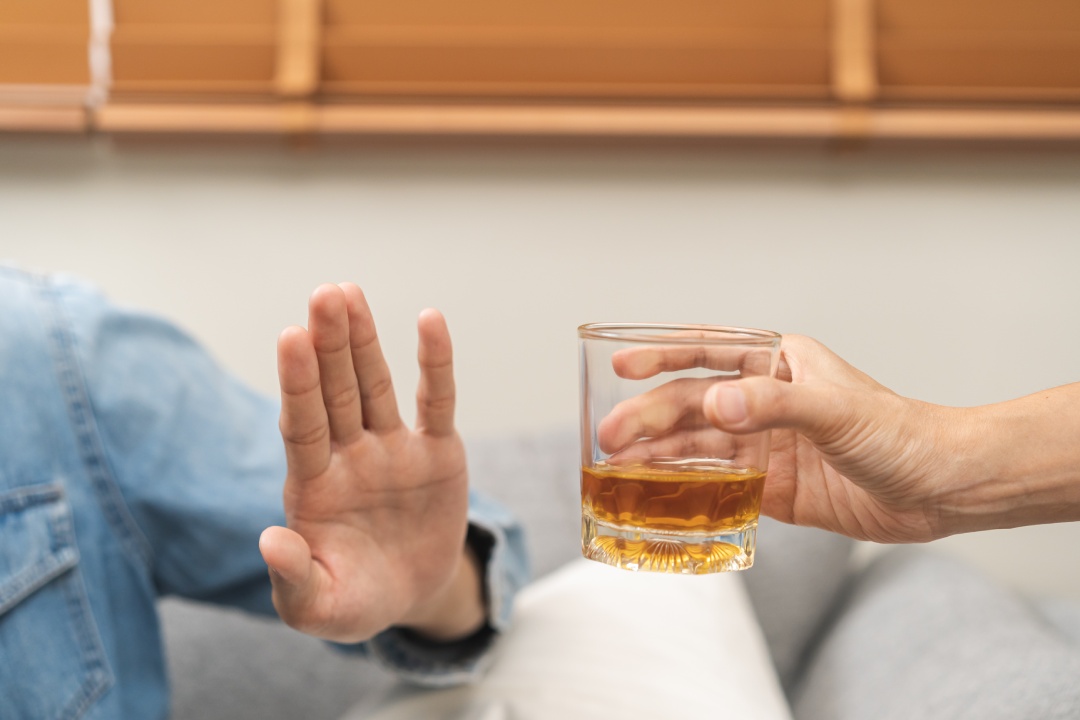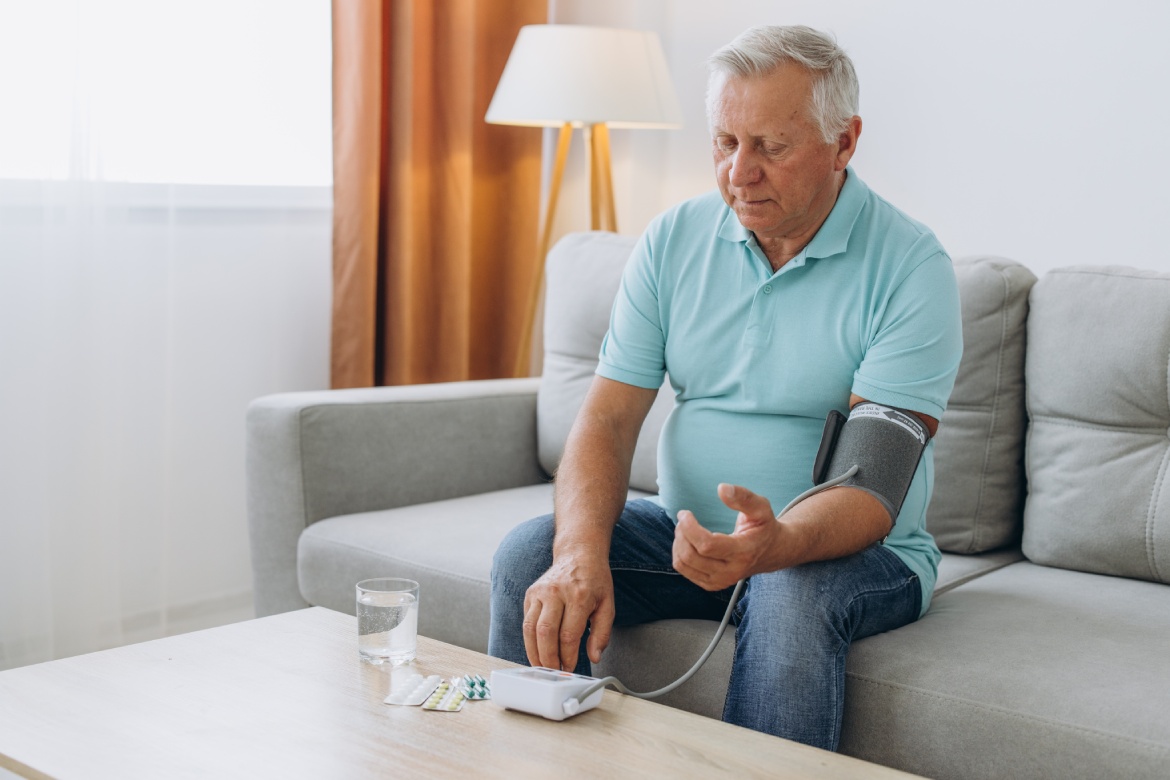How to Reduce High Blood Pressure with Ease: Expert Advice
High blood pressure, or hypertension, is often called the “silent killer.” This is because it usually shows no symptoms, yet it can quietly lead to serious health complications. With nearly half of American adults affected, hypertension often goes unnoticed, putting many at risk for heart disease, stroke, and kidney damage.
Fortunately, high blood pressure is a manageable condition. In this article, we will look at the ins and outs of understanding high blood pressure, how to reduce high blood pressure, lifestyle changes you can implement, and potential medication options by experts.
Understanding High Blood Pressure

Every time your heart beats, it pumps blood through your arteries, creating pressure against the artery walls. This pressure, known as blood pressure, is measured in two numbers:
Systolic pressure (the first number): the force in your arteries when your heart beats.
Diastolic pressure (the second number): the force in your arteries when the heart rests between beats.
What is Normal Blood Pressure by Age?
Normal blood pressure varies by age, but here’s a general guide to healthy ranges:
| Age Group | Blood Pressure Range (mm Hg) |
|---|---|
| Adults 19-40 years | 95-135 / 60-80 |
| Adults 41-60 years | 110-145 / 70-90 |
| Older adults (61+) | 95-145 / 70-90 |
Keeping blood pressure within these ranges helps maintain optimal health and reduces the risk of serious complications. Regular check-ups and monitoring are the best ways to make sure you’re in a safe range.
Why High Blood Pressure is Dangerous
High blood pressure often develops without noticeable symptoms, making it easy to overlook. However, when left unmanaged, it causes gradual yet severe damage to your body, including:
Heart disease
High blood pressure puts extra strain on the heart, increasing the risk of heart attacks, heart failure, and weakening of the heart muscle over time.
Stroke
High blood pressure can weaken or rupture blood vessels in the brain, leading to a stroke — a potentially life-threatening event that can cause lasting disability or even be fatal.
Kidney damage
Hypertension damages the kidneys over time, increasing the risk of kidney failure.
Symptoms of High Blood Pressure

So, how do you feel when BP is high? High blood pressure usually presents no symptoms, but in cases of very high readings, you may experience:
- Severe headaches
- Chest pain
- Dizziness
- Shortness of breath
- Blurred vision
These high blood pressure symptoms require immediate medical attention, as they may indicate a hypertensive crisis. Timely care is key!
How to Reduce High Blood Pressure

Managing high blood pressure doesn’t necessarily mean drastic lifestyle overhauls. Here are some evidence-backed strategies to help reduce your high blood pressure naturally:
1. Adopt a heart-healthy diet: The DASH approach
The Dietary Approaches to Stop Hypertension (DASH) diet is a balanced eating plan that can lower blood pressure and improve heart health.
Here’s how to implement DASH:
Eat plenty of fruits and vegetables
Rich in fiber and antioxidants, these help reduce blood pressure and promote general health.
Choose whole grains and lean proteins
These nutrient-dense foods provide essential fuel and help control blood pressure.
Opt for low-fat dairy
Provides necessary nutrients with fewer fats that could raise blood pressure.
Reduce sodium intake
Aim for under 1,500 mg of sodium daily to support lower blood pressure. Avoid consuming processed foods and check food labels for sodium content.
In addition to following the DASH diet, aim to include potassium-rich foods like bananas, oranges, and spinach, as potassium helps counteract the effects of sodium and further reduces blood pressure.
2. Incorporate physical activity into your routine
Regular exercise strengthens the heart, so it pumps blood more efficiently, reducing the force on arteries. Engaging in at least 30 minutes of moderate exercise most days of the week can reduce blood pressure by up to 8 mm Hg.
Some ways to make exercise a regular part of your life include:
Go for a walk
Walking is one of the most accessible forms of exercise and can be done anywhere.
Try swimming, cycling, or dancing
Fun and social activities that boost cardiovascular health.
Do household chores
Gardening, vacuuming, and other activities that get you moving count as physical activity.
To keep exercise engaging, try varying activities and involving family or friends for motivation and support. Exercise also has mental health benefits, including stress reduction, which is important for blood pressure management.
3. Manage your weight and waistline
Weight and waist circumference have a direct impact on blood pressure. Excess weight, especially around the abdomen, increases the risk of hypertension. For every 10 pounds lost, blood pressure can drop by 1-2 mm Hg.
Tips for effective weight management include:
Setting realistic goals
Focus on gradual changes, like cutting out sugary drinks or eating more whole foods.
Tracking your progress
Use a journal or mobile app to stay motivated and celebrate small wins.
Watching portion sizes
Eating smaller portions can help with weight loss and prevent overeating.
Keep in mind that weight management is a journey, and gradual changes are more sustainable than quick fixes. Be kind to yourself, and remember that small changes add up.
4. Limit alcohol and quit smoking

Drinking too much can raise blood pressure. Stick to one drink per day for women and two drinks per day for men. One drink equals:
- 12 ounces of beer
- 5 ounces of wine
- 1.5 ounces of distilled spirits
Each cigarette raises blood pressure temporarily. Long-term smoking can damage blood vessels and increase the risk of heart disease. By quitting, blood pressure can gradually improve, and overall cardiovascular health benefits immensely.
If you find it challenging to quit smoking or reduce alcohol intake, consider support resources, such as therapy groups, counseling, or mobile apps that offer personalized tips and reminders.
5. Practice stress management techniques
Chronic stress contributes to high blood pressure, so managing it is recommended. Here are some simple yet effective ways to keep stress in check:
Meditate or practice mindfulness
Taking a few minutes each day to focus on your breathing or meditate can reduce stress and lower blood pressure.
Engage in relaxing hobbies
Activities like reading, cooking, painting, or gardening can help you unwind.
Take short breaks
During the day, step away from your routine to stretch, go for a walk, or simply breathe deeply.
Creating a personal relaxation routine, even if it’s only a few minutes each day, can improve your mental and physical well-being and lower blood pressure.
6. Reduce your sodium intake
Sodium, commonly found in processed foods, is a significant factor in raising blood pressure. The American Heart Association recommends limiting sodium intake to 1,500 mg or less per day.
Here’s how to make it easier:
Cook at home
Homemade meals allow you to control the amount of salt you use. Get creative with herbs and spices for added flavor.
Read food labels
Look for items labeled “low sodium” or “no added salt.”
Choose fresh foods
Fresh vegetables, fruits, and whole foods generally have lower sodium content than canned or processed items.
Reducing sodium gradually helps your taste buds adjust, and you may find that you prefer the flavors of lower-sodium dishes over time.
Medication Options for High Blood Pressure
In some cases, lifestyle changes may not be enough to lower blood pressure to safe levels. When necessary, medication can help.
Here’s an overview of common blood pressure medications and how they work:
Diuretics
Also known as “water pills,” diuretics help your body get rid of excess sodium and water, reducing blood pressure.
ACE Inhibitors
These relax blood vessels by blocking the formation of a hormone that narrows blood vessels.
Beta-Blockers
These reduce heart rate, which lessens the heart’s workload and lowers blood pressure.
Calcium Channel Blockers
These prevent calcium from entering heart and artery cells, allowing blood vessels to relax.
How is your general health? Make an appointment to find out!
Monitoring Blood Pressure at Home

Monitoring your blood pressure at home can help you get valuable insights into your condition. Here’s how to make the most of home monitoring:
Measure at the same time each day
Try to take readings in the morning or evening when you’re relaxed.
Record your readings
Keep a log to help track patterns and share them with your healthcare provider.
Relax before taking a reading
Sit quietly for a few minutes before measuring to ensure an accurate reading.
Home monitoring helps you see how lifestyle or medication changes are impacting your blood pressure, and it allows you to act on early signs if your readings trend upward.
Why Choose Kuye Medical Group for Blood Pressure Management?
Kuye Medical Group is committed to your heart health. Our approach focuses on treating each patient as an individual.
We recognize that managing high blood pressure is not a one-size-fits-all process. That is why our team is dedicated to providing personalized, compassionate care to help you manage high blood pressure and boost your well-being.
Schedule a consultation today and start your journey toward a healthier, more vibrant life.






